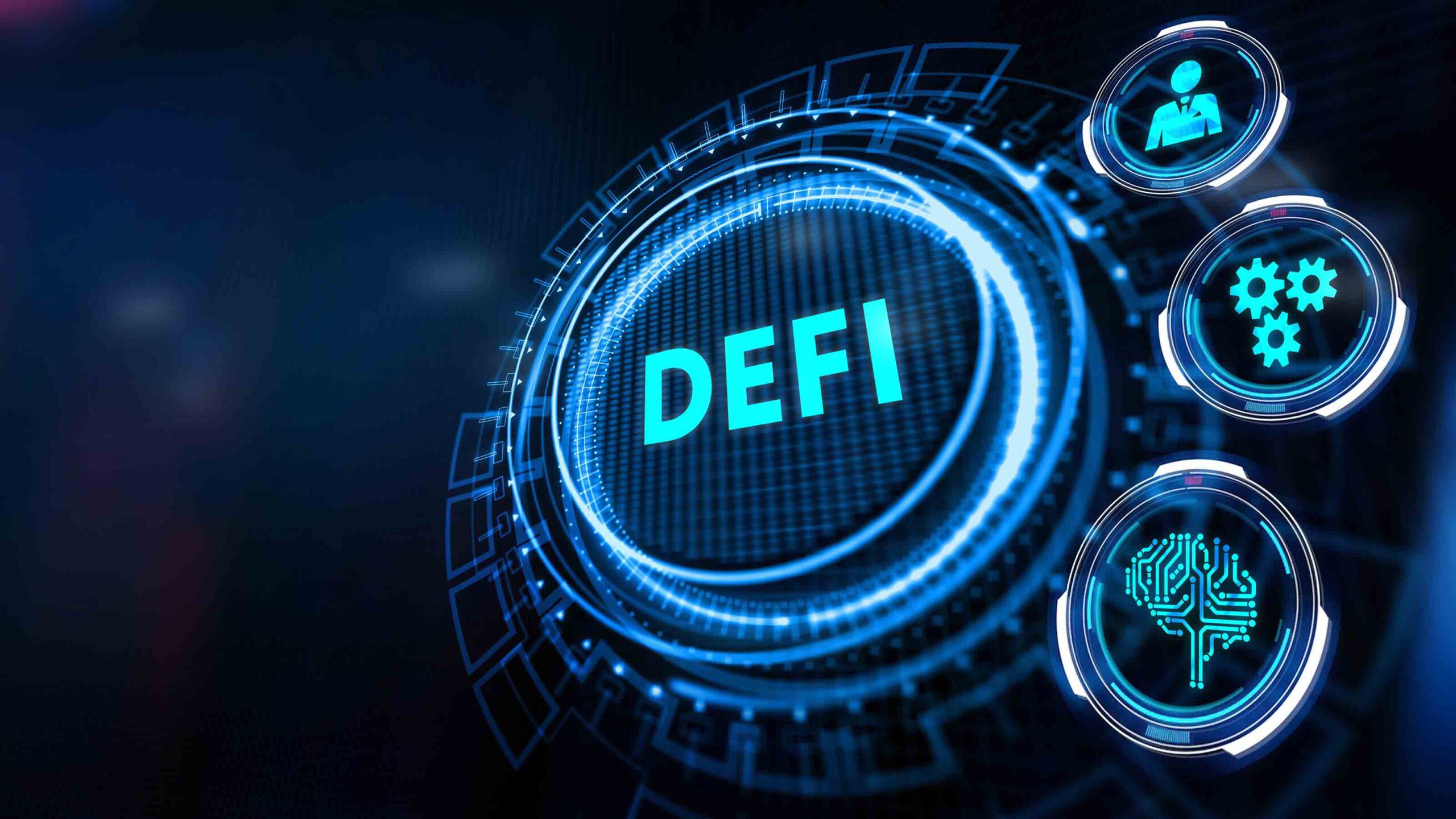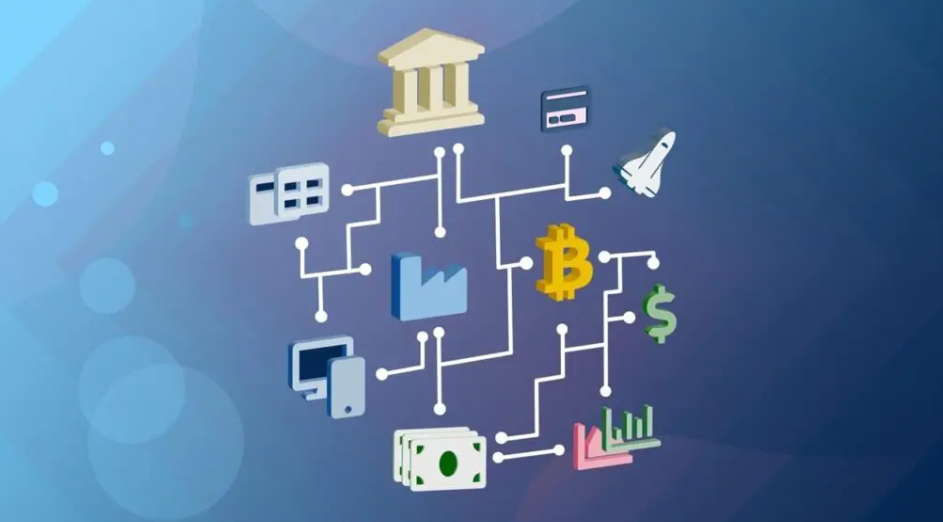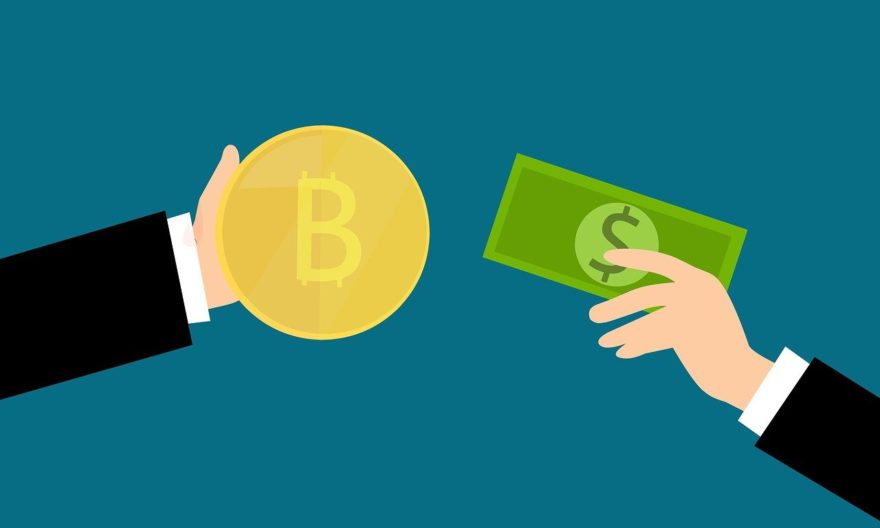
For so many years, people used to rely on fulfilling their demands of utilizing traditional finance services through centralized entities like banks, governments, and financial institutions. These entities held the responsibility of managing assets and providing financial assistance.
In recent years, a new technology has emerged on the scene that is giving these entities very tough competition, and that is DeFi (Decentralized Finance). DeFi refers to a set of financial services and applications that are built on blockchain technology. The aim of introducing DeFi was to improve the traditional finance system by recreating it to modern needs and demands.
Let’s look at DeFi vs Traditional Finance, how these services vary from each other and what advantage the newer technology holds over the traditional method.
The Central Idea of DeFi: Decentralization

Decentralization means that no single entity holds complete control over the entire system. In terms of DeFi, which contains decentralized literally in the name, it means that financial functionalities are divided across a network of nodes, and no single entity has the authority to make modifications in a node.
Instead, a group of validators is required to approve the transactions before it can make modifications to the data held inside the nodes. On the other hand, Traditional Finance runs on a centralized model where a few entities have control over the entire financial ecosystem. In simpler terms, you would have to rely on their integrity to ensure that no erroneous data that can make illegitimate modifications is fed into the system.
This is the core difference between these two concepts, and we will later discuss the advantages DeFi holds over Traditional Finance.
Core Differences
Intermediaries
By its very nature, DeFI operates on the principle of decentralization, which means that it cuts the need for intermediaries from the process of completing transactions. These intermediaries are usually banks and other related financial institutions. DeFi achieves the result of eliminating the intermediaries by using smart contracts. Smart Contracts are pieces of self-executing codes that are at the heart of the operation.
These contracts automatically execute when certain terms of agreements are met and ensure that the transaction goes through on the blockchain network, therefore not requiring outside intervention to verify the validity of the transaction, which would require time and resources to check.
Therefore, it reduces the transaction time, and the network can take much more load to complete further tasks. Not only do you reduce the time, but you also reduce the cost of completing these tasks. Users can engage directly with the decentralized protocols, lending, borrowing, and trading assets without relying on a central authority.
Transparency and Security
The other purpose Smart contracts serve in DeFi is to ensure that once the transaction is recorded, it cannot be altered. Therefore, the integrity of the data is not compromised, which means that whoever inspects the said data is looking at it in its original form, which makes DeFi transparent. The need for a system that is transparent answers the problems of users questioning the authenticity of the data. By making the system transparent, users can verify transactions on the blockchain, which, as a result, enhances trust in the design and reduces the risks of fraud at the same time.
Traditional financial systems, on the other hand, involve processes that are not open to everyone. Access to the data is very limited for users, which creates a certain level of doubt among them as they cannot scrutinize the transactions they make completely. One of the basic requirements of the general public is that the system they are using is accountable for its action so that they know who to ask questions about if their transaction data is compromised.
However, it’s essential to note that while smart contracts offer transparency, they also pose security risks. Vulnerabilities in smart contract code can be exploited, leading to potential losses for users. Continuous auditing and improvement of smart contract security are crucial to mitigate these risks.
Traditional financial institutions operate within a framework of regulations designed to safeguard sensitive information, prevent illegal activities, and protect individuals’ privacy. As a result, controlled access to certain financial data is implemented to maintain the integrity of the financial system while respecting legal and confidentiality requirements. The challenge lies in finding ways to enhance transparency within the bounds of these regulatory frameworks.
Accessibility and Inclusivity
Traditional Financial systems often exclude individuals who don’t have access to banks or financial institutions. DeFi, on the other hand, is known for its global accessibility and its ability to include anyone who has a working internet connection.
The inclusivity of this system means that it gives people a sense of empowerment as DeFi is helping those who are either unbanked or underbanked. It provides financial services that were previously out of reach for the above-stated type of individuals and provides them with services like lending, borrowing, and trading without much resistance.
Traditional Finance has requirements like account requirements, credit checks, and geographical limitations that make the system restrictive. Conversely, DeFi boasts about being borderless and, therefore, has the strength to break these barriers of not being able to provide financial services to anyone.
Regulations
Now, we arrive at a point that doesn’t bode well for DeFi. Due to still being a relatively new technology, DeFi operates in a grey area when it comes to following regulations.
The decentralized nature of DeFi platforms and the fact that they are global, meaning they can be operated from anywhere, can cause a headache for regulatory authorities who cannot perform regulatory checks on an entity that is not working inside their jurisdiction. The lack of regulatory clarity poses challenges for both users and platform developers.
While some argue that reduced regulation allows for innovation and financial freedom, others express concerns about the potential for misuse, fraud, and market manipulation in the absence of oversight. The evolving regulatory landscape impacts user adoption, as individuals and institutions may be hesitant to engage with DeFi platforms due to legal uncertainties.
Services and Product

Lending and Borrowing: DeFi vs. Traditional Finance
DeFi: The process of lending and borrowing in DeFi involves users lending their access to digital assets, like cryptocurrency, to exchanges. They can earn interest on the amount they lend. Borrowers can borrow cryptocurrency after agreeing to pay some form of collateral so that the business and lenders can recoup their initial amount if the borrowers cannot repay them for any number of reasons.
The supply and demand of a particular asset determine interest rates. For exchanges to gain more traction toward their platform, they are willing to provide competitive rates that would seek more users compared to traditional banking. Smart contracts are responsible for managing the collateral requirements, therefore essentially automating the lending process. On the whole, the DeFi approach provides borrowers with access to funds without requiring a thorough credit check.
Traditional Finance: Lending and borrowing in Traditional Finance involve approaching the banking sector, which has centralized processes where banks require access to your credit history, setting interest rates, and managing collateral. The approval process for lending you an amount can be time-consuming, and regulatory constraints can result in you getting less flexible interest rates.
The toughest aspect of this method is that if your credit score is not up to the minimum requirements of these institutions, then there is no way they are going to approve the process of lending you any amount, or you would have to submit a substantial amount of collateral if you want any chance to borrow some amount from them.
Trading and Investment: Decentralized Exchanges (DEXs) vs. Traditional Stock Exchanges

DeFi: Decentralized exchanges, also known as DEXs, are a key part of DeFi. They allow people to trade assets on their platform straight from transferring funds directly to the exchange without the need for any middleman. DEXs work on blockchain networks and offer a large variety of tokens for trading.
One of the positive aspects of these is that they allow users to have more control over their assets because they can trade directly with each other using smart contracts. Liquidity pools ensure that the prices are kept fair, and trading fees remain lower compared to traditional regular exchanges.
Traditional Finance: Traditional stock exchanges, such as the New York Stock Exchange (NYSE) or NASDAQ, operate under centralized authorities. If you want to indulge in trading activities on these platforms, then you would have to deal with brokers who execute the transactions on your behalf.
While traditional exchanges offer a large variety of financial instruments to choose from, the process involved in using them, like order execution time, settlement process, limited market hours and trading days, and regulatory compliance, means that your trading process can become slow.
Also, you would have to pay large fees to execute your trading activities. In addition to going through all these processes, access to traditional stock exchanges may be restricted for certain investors, depending on regulatory requirements.
Yield Farming and Staking: DeFi Passive Income vs. Traditional Investments

DeFi: Yield farming and staking are unique to DeFi, allowing users to earn passive income by locking up their crypto assets. In yield farming, users provide liquidity to decentralized platforms and earn rewards in the form of additional tokens. Staking involves locking up tokens to support the network and receiving dividends. While these methods can offer high returns, they come with higher risks due to the volatility of crypto assets.
Traditional Finance: In traditional Finance, investors seek passive income through more conventional means, such as bonds or dividend-paying stocks. Bonds provide fixed interest payments, while dividend stocks pay a portion of the company’s profits to shareholders.
While these options are generally considered less risky than some DeFi strategies, they may offer lower returns and access to certain investment products may require a higher level of financial knowledge of a sophisticated nature.
Other Services: Exploring Emerging DeFi Applications
Decentralized Insurance: Decentralized insurance involves different parties pooling their resources together and teaming up using smart contracts. They then set the objective of providing coverage for certain risks using smart contracts.
The approach employed in decentralized insurance is different from the one used by traditional insurance companies, where a person has to go through various processes to verify their claim. The positive aspect of decentralized insurance is that it aims to provide a more transparent and efficient method of processing insurance claims.
DAOs (Decentralized Autonomous Organizations): DAOs represent a form of decentralized governance, allowing users to participate in decision-making processes related to a particular project or platform. In traditional Finance, decision-making is centralized within corporate structures. DAOs operate in a different manner where they utilize blockchain-based voting mechanisms to enable community-driven governance.
Advantages and Disadvantages of DeFi
Advantages of DeFi
- Since DeFi platforms are decentralized, they offer users unparalleled control over their assets compared to traditional methods. One of the most salient features of DeFi platforms is the elimination of middlemen, which reduces the time and costs attached to it.
- The transparency of the smart contracts that are integrated into the network to execute transactions when certain conditions are met makes it a desirable option to explore. Also, the security these platforms provide means that your data is safe from unauthorized access.
- Due to the permissionless nature of DeFi, it allows those who are underbanked or unbanked to gain access to financial services, something they would remain elusive to in Traditional Finance.
- DeFi offers the possibility of higher yields and returns compared to traditional financial options. Services like lending, yield farming, and crypto staking can provide users with opportunities to earn attractive returns on their crypto assets.
Disadvantages of DeFi
- Engaging with DeFi platforms requires acquiring a certain level of technical knowledge and skills that can prove to be a big hurdle for entry-level users of this platform who don’t have the necessary technical knowledge. The complexity of interacting with wallets, managing private keys, and understanding smart contract functionalities can be overwhelming for those unfamiliar with blockchain technology.
- While blockchain technology is lauded for providing security to your data, the system still has some vulnerabilities in it. Smart contracts are especially more prone to hacks, which can result in people suffering from significant financial losses. Users must exercise caution and conduct thorough due diligence before participating in DeFi projects to avoid facing such risks.
- Due to the volatile nature of cryptocurrency, users who want to engage in DeFi activities must take into consideration the possibility of sustaining losses in case of market upheaval. Prices of tokens can be highly unpredictable, affecting the value of assets within DeFi platforms.
- The regulatory environment surrounding DeFi is still very unclear and is going through an evolutionary process that may take some time to be well-defined. The regulatory uncertainty is also the reason that its adoption has not been taken at such a speed that was anticipated by a system of this nature.
Despite its potential, DeFi is still in its early stages of development, with limited use cases compared to traditional financial systems. This is reflected in the relatively low user adoption, which can be attributed to factors such as the need for transitioning from established structures, regulatory uncertainties, and limited awareness.
However, the DeFi ecosystem is rapidly evolving, with new use cases emerging all the time and growing interest from both individuals and institutions, suggesting significant potential for global reach and future growth.
Future of DeFi vs Traditional Finance
No one can deny the increasing popularity of DeFi platforms in the present world. Even though it looks to contain limited use cases and a user base that restricts its immediate impact on the traditional financial market, it is growing at a rapid pace. It has the potential to make an impact globally.
The financial world is seeing a growing number of examples where Traditional Finance is adopting DeFi’s transparent and accessible nature, along with its cost-cutting and time-efficient approaches to conducting transactional activities. Collaboration appears increasingly likely, with Traditional Finance adopting DeFi’s traits while DeFi leverages Traditional Finance’s existing infrastructure and regulatory framework.
This hybrid approach could lead to a more inclusive and efficient financial future, where both systems co-exist and benefit from each other’s strengths.




